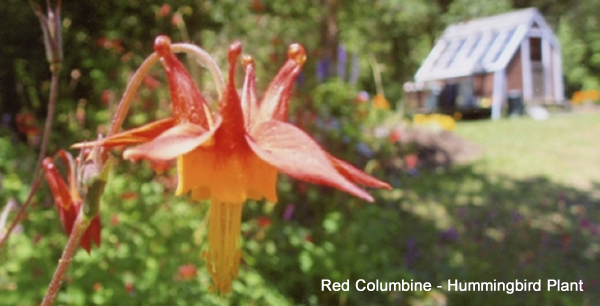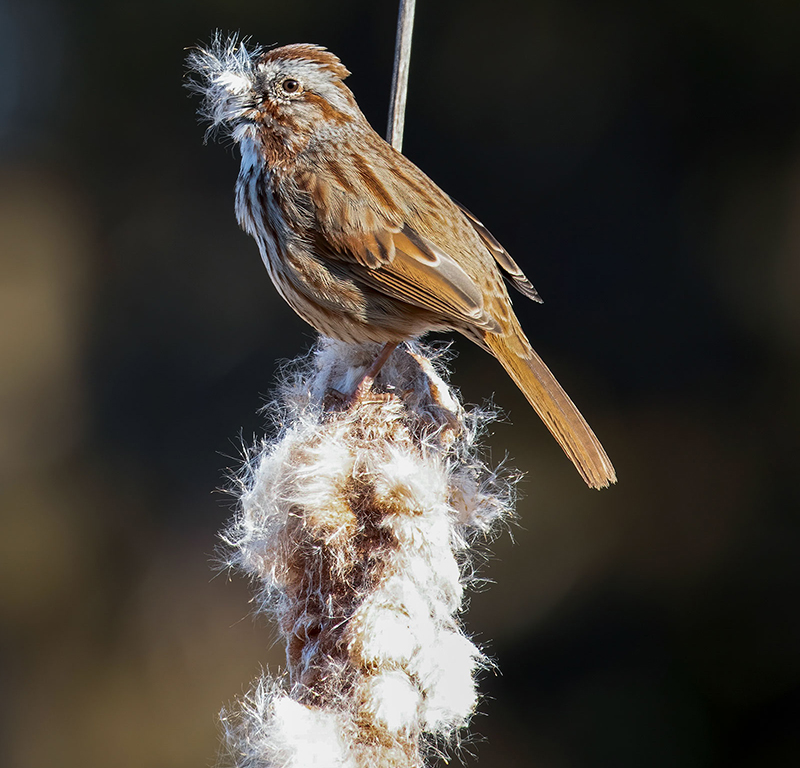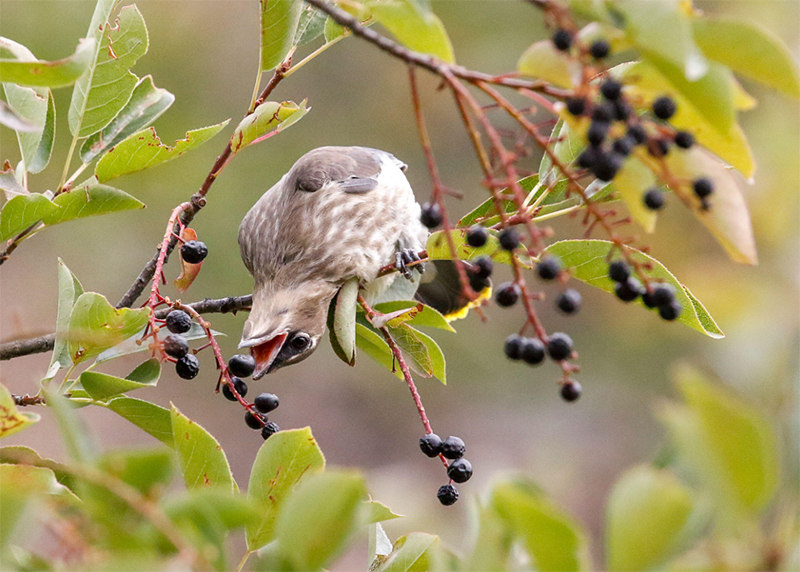Cedar Waxwing on Chokecherry
This young Cedar Waxwing relies on its acrobatic reach to feed from a chokecherry shrub in autumn. As the chokecherries ripen in the summer and fall months, Cedar Waxwings incorporate them into their already fruit-heavy diets. Such a diet has led to a phenomenon where, after gorging on berries in the winter and spring that have been over-ripened, thawed and fermented, waxwings have been known to get tipsy.



